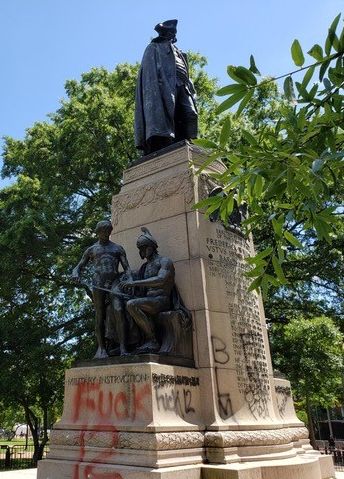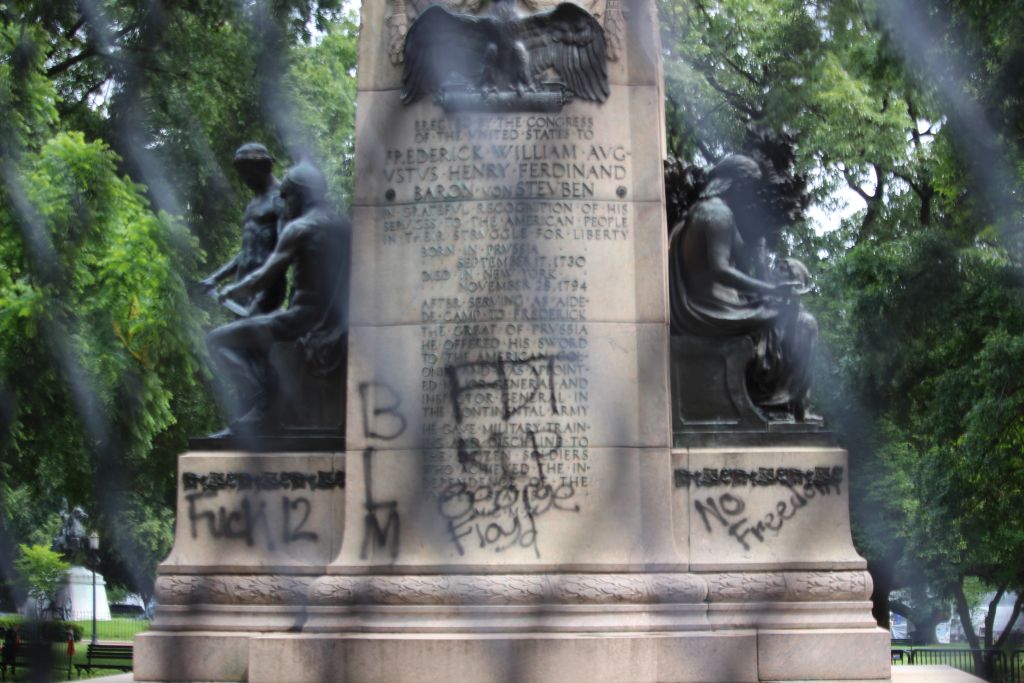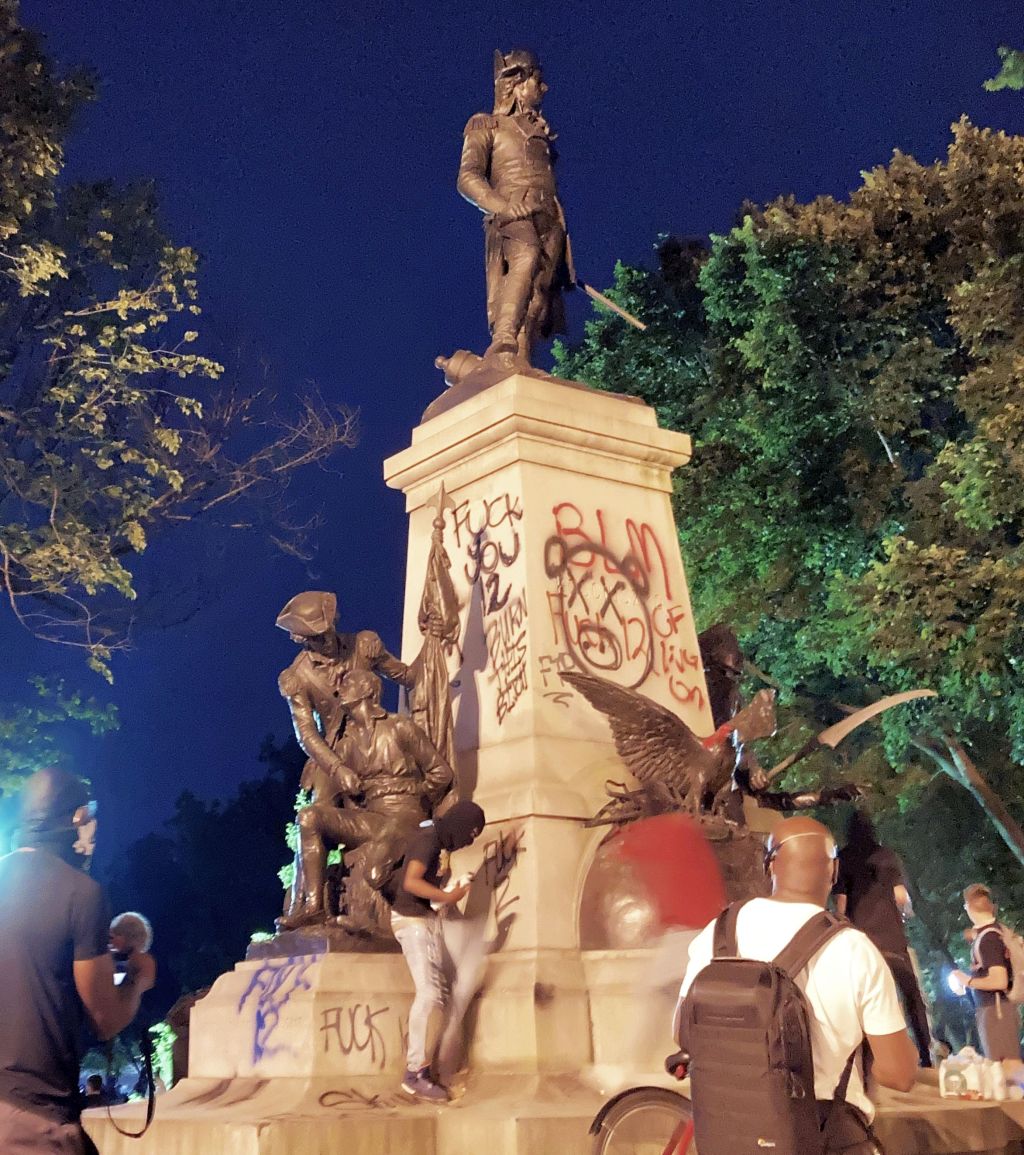Both our Constitution and our historic monuments were trashed during recent protests.
-
June 2020
Volume65Issue3
We wonder which is worse: authorities abusing our Constitutional rights or protesters wantonly damaging historic monuments dedicated to young revolutionaries such as Lafayette and Kosciuszko?
Many people believe it was a violation of First Amendment rights for the government to attack and arrest citizens protesting the murder of George Floyd and what they see as systemic racism in many police departments. To do so for the purpose of a frivolous and ineffective photo opportunity seems inappropriate.

But in the tsunami of comments about these events, very few in the media have mentioned another sad and ironic development during these events: the desecration of historic property.
People ignorant of history look at statues and think they are quaint and outdated memorials to long dead white men. But who were these men honored in Lafayette Square? It turns out three of them were revolutionaries and immigrants fighting for justice and freedom.
First of all, Lafayette Square honors the 19-year-old French nobleman who gave up a comfortable life to come to America to help fight against monarchy and the excessive privileges of the aristocracy that he himself enjoyed.
Lafayette also helped create better ties between France and our young nation. The funds, soldiers, and ships sent by France were critical to winning our freedom.
As Gil Klein notes in this issue, Lafayette was also an abolitionist who helped convince Washington to free his slaves in his will. And, at the beginning of the French Revolution, with Jefferson’s help, Lafayette wrote the “Declaration of the Rights of Man and of the Citizen.”
Lafayette’s actions were selfless and noble and had important consequences, which is why generations have admired him. It’s too many the demonstrators didn’t know more about him.
See "Lafayette Square: Seven Acres of History” by Gil Klein in this issue.
Also badly defaced in Lafayette Square was the statue of Friedrich Wilhelm von Steuben, who turned a disorganized rabble of farmers and shopkeepers into a fighting force that defeated the most powerful army in the world. There's a good change we might not have won the Revolution if von Steuben had not taught the Continental Army about military drills, tactics, and discipline.

Von Steuben had been an officer in the Prussian army, wounded, and taken prisoner in the wars against Russia. For his contributions, he was made a baron. But after meeting with Benjamin Franklin in Paris he emigrated to America.
In addition to his efforts to train the army, Von Steuben wrote the book that served as its drill manual for decades, Regulations for the Order and Discipline of the Troops of the United States.
Von Steuben's influence was so great that Gen. Washington eventually named him chief of staff.
For more about Von Steuben, check out Tom Fleming's essay, The Magnificant Fraud

In another part of the square stands the towering bronze statue of Andrew Thaddeus Kościuszko, the Polish statesman and revolutionary who traveled to the U.S. to fight with the patriots against the British.
Born in 1746, Kościuszko had graduated from Poland’s Corps of Cadets and studied in France before hearing about the colonial uprising in North America. Hoping to contribute to the cause, he sailed for America in 1776 and immediately applied to join the Continental Army.
After serving briefly as a volunteer under Benjamin Franklin, Kościuszko was commissioned as colonel and distinguished himself as a capable military architect. He helped to fortify a number of major defense outposts, including in North Carolina, Saratoga, and at West Point, where he spent more than two years. Following the war in the U.S. he sailed back to Poland, where he continued advancing his revolutionary cause in the Polish-Russian War of 1792.
In 1798, Kościuszko returned once more to the U.S. In a will written that same year, he dedicated his U.S. assets, which he’d received as compensation for his service in the Continental Army, to the education and freedom of U.S. slaves.
It's sad that probably none of the protesters will learn that some of those old white men on statues fought as strongly for human rights as demonstrators today.


